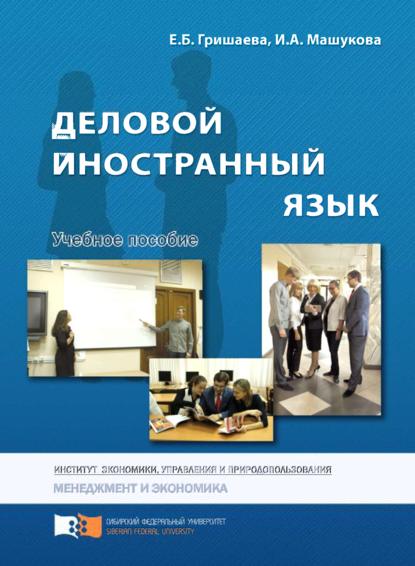По всем вопросам обращайтесь на: info@litportal.ru
(©) 2003-2024.
✖
Деловой иностранный язык
Настройки чтения
Размер шрифта
Высота строк
Поля
Increased emphasis was placed on small start-up subsidiary companies to promote new ideas – e.g. InterMedia was set up in August 1993 to fund the expansion in Europe of high technology ventures which can then be marketed worldwide using IBM's global manufacturing, marketing and distribution networks. The aim was to make IBM more flexible to sudden market changes, rather than the unwieldy organisation it had been, and to make managers and individual companies like InterMedia more accountable for their actions.
A further part of the IBM strategy was close cooperation with US computer manufacturer Apple Computers to produce common design for the microchips, in conjunction with chip producer Motorola.
In mid-1995 IBM announced a successful takeover bid for software producer Lotus. By these two actions IBM has addressed the two big gaps in its strategy in the 1980s.
The effect of this turnaround strategy was that by late 1994 IBM had achieved a third quarter profit of $710 m, and a fourth quarter profit of $382 m. IBM revenue in Europe rose by 13 per cent.
However, the return to profitability is substantially due to the large-scale redundancies who will not be re-employed, even if the recovery continues.
A. It also abandoned its policy of lifelong employment for its staff.
B. Its strong position in European manufacturing and employment has made it as much a European business as any European-owned company.
C. It was described by IBM chairman Louis Gerstner as the start of the second stage of recovery.
D. This was aggravated by the rapid growth in PC performance, meaning that corporate customers increasingly used networked PCs rather than buying large mainframes.
E. This will enable common software to run on both machines and was intended to give independence from Intel and Microsoft.
F. Moreover, it was announced by the board to be the final stage of recovery.
Task 15. Talking Point 4
Read the text again and make notes under the headings given below:
? Internal sources of IBM organizational structure delayering
? External sources of IBM organizational structure delayering
? Recovery strategy and of IBM company
? Benefits from delayering of IBM
? Consult Speaking References p. 126–130.
According to your notes discuss the following:
Is delayering tactics always argued to have recovery effect?
Express your point of view.
Using Internet resources analyse similar cases: make comparison of initial situations and effects of delayering.
Unit 3. Management and Cultural Diversity
Learning outcomes
? Understand the importance of interdependence of culture and management
? Learn about varieties of cultures and their impact on transactions, negotiations and meetings
? Participate in discussions using your personal experience
? Master your skills in writing a summary, an essay
Task 1. Reading 1
Getting started
? Before reading the text, discuss in small groups what associations you have when you hear the word “culture”.
? Have you ever experienced any cultural differences when travelling? Which aspects of life surprise, confuse or may be even shock you?
? Think of any consequences of cultural misunderstanding in doing business and list them out. Compare your list with a partner and discuss the points you mentioned.
? Define the term “culture” in your own words, compare with your partner’s. Do you have similar ideas?
? Read the information about culture below; compare your ideas with those in the article. Then read the text. Consult Vocabulary p. 146–147.
NATURE OF CULTURE
Culture is acquired knowledge that people use to interpret experience and generate social behavior. This knowledge forms values, creates attitudes, and influences behavior. Most scholars of culture would agree on the following characteristics of culture:
? Learned. Culture is not inherited or biologically based; it is acquired by learning and experience.
? Shared. People as members of a group, organization, or society share culture; it is not specific to single individuals.
? Transgenerational. Culture is cumulative, passed down from one generation to the next.
? Symbolic. Culture is based on the human capacity to symbolize or use one thing to represent another.
? Patterned. Culture has structure and is integrated; a change in one part will bring changes in another.
? Adaptive. Culture is based on the human capacity to change or adapt, as opposed to the more genetically driven adaptive process of animals.
CULTURAL DIVERSITY
When people hear the word "diversity," they may think of categories that are now highly conventionalised race, ethnicity, class, gender, sexual orientation, religion, political views, etc. The term has been appropriated widely and its meaning has become somewhat diluted, but many of the original issues and concerns that prompted people to recognize, celebrate and covet diversity still remain relevant today. At the same time, many of the same issues that were invisible in the early discussion of diversity continue to be overshadowed by visible categories of diversity.
There are many ways of examining cultural differences and their impact on national management. Culture can affect technology transfer, managerial attitudes, managerial ideology, and even business-government relations. Perhaps, most important culture affects how people think and behave. Table 1, for example, compares the most important cultural values of the United States, Japan, and Arab countries. A close look at this table shows a great deal of difference between these three cultures. Culture affects a host of business-related activities, even including the common handshake. Here are some contrasting examples:
Table 4
Culture Type of handshake
In overall terms, the cultural impact on international management is reflected by these basic beliefs and behaviors. Here are some specific examples where the culture of a society can directly affect management approaches:
? Centralised vs. decentralised decision making. In some societies, all important organisational decisions are made by top managers. In others, these decisions are diffused throughout the enterprise, and middle- and lower-level managers actively participate in, and make, key decisions.





